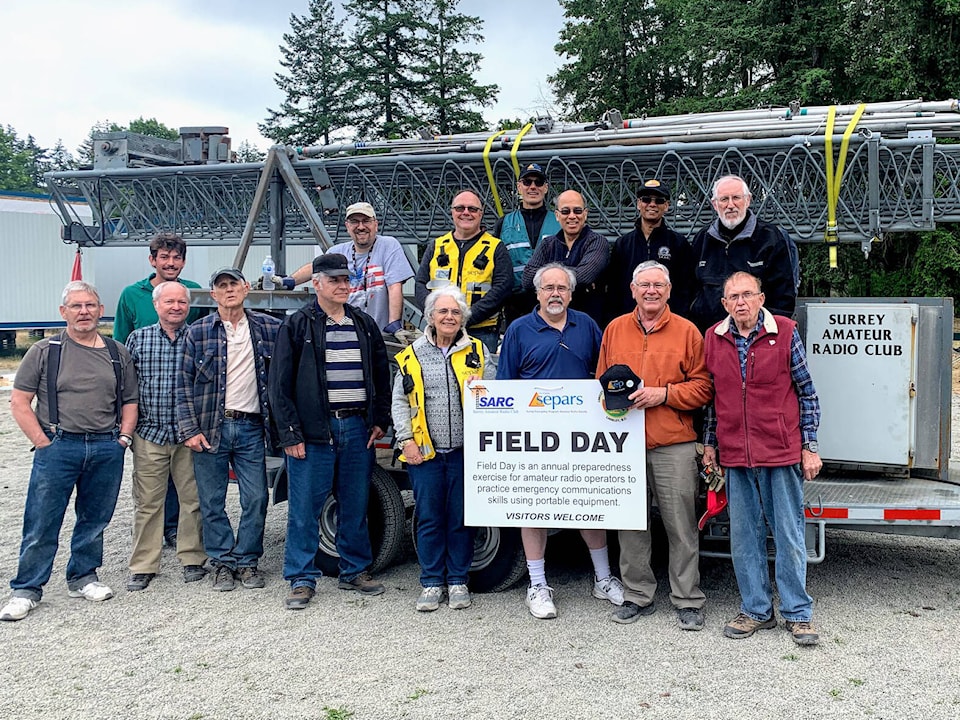“When all else fails, ham radio works.”
Surrey’s federally certified radio operators, often called “hams,” will be putting this slogan to the test this weekend, as they join thousands of other amateur radio operators across North America to test their emergency capabilities.
Known as Field Day, Surrey’s ham radio operators will use a variety of voice and data techniques during the annual exercise that starts Saturday (June 25) at 11 a.m. and runs until Sunday (June 26) at 11 a.m. at the Surrey Emergency Program facility located at 5756 142 St.
John Schouten from Surrey Amateur Radio Communications (SARC) says Field Day, also known as “ham radio’s open house,” has been an annual event since 1933 and remains the most popular event in ham radio.
Every June, more than 40,000 hams throughout North America set up temporary transmitting stations in public places on Field Day. The objective is to contact as many stations as possible and to learn to operate in abnormal situations in less than optimal conditions. Using only emergency power, ham operators will build emergency stations in parks, parking lots, schoolyards and backyards throughout the continent and operate without commercial infrastructure for the duration of the 24-hour exercise.
Schouten says the Surrey team placed first in their Canadian category in recent pre-COVID years. In past years, he adds, the technology shown has included contact with astronauts orbiting in the International Space Station.
These skills that are put on display during Field Day are vital in an emergency situation, says Gord Kirk, co-ordinator for the Surrey Emergency Program Amateur Radio (SEPAR) group.
“Amateur radio is not centralized,” he said. “There is no single point of failure; it does not rely on the Internet, a power utility or a communications company, cell towers or other infrastructure to provide service. It works when nothing else is available. Once set up, we need nothing between us but air.”
SEPAR, in partnership with SARC, provides funding, expertise, equipment and thousands of volunteer hours every year to support the City of Surrey Emergency Program.
SARC President Steve McLean says during an emergency, hams are important people to have around.
“We are fortunate that what hams enjoy as a technically-challenging hobby can make a vitally important contribution to emergency communication during a crisis,” McLean said.
Surrey Fire Service assistant chief Shelley Morris co-ordinates emergency response for the City of Surrey.
“Amateur Radio plays an integral part in emergency preparedness during any major disaster for the city,” she says. “They train extensively and they operate a communications room out of our Number One fire hall. They play a very important role keeping backup communications for the operations centre up and running during a major disaster and providing enhanced life safety for the citizens of Surrey.”
Surrey city council has designated June 19 to 25 as Amateur Radio Week. Click here to learn more about Surrey Emergency Program Amateur Radio and click here to learn more about Surrey Amateur Radio Communications.
beau.simpson@surreynowleader.com
Like us on Facebook Follow us on Instagram and follow us on Twitter
